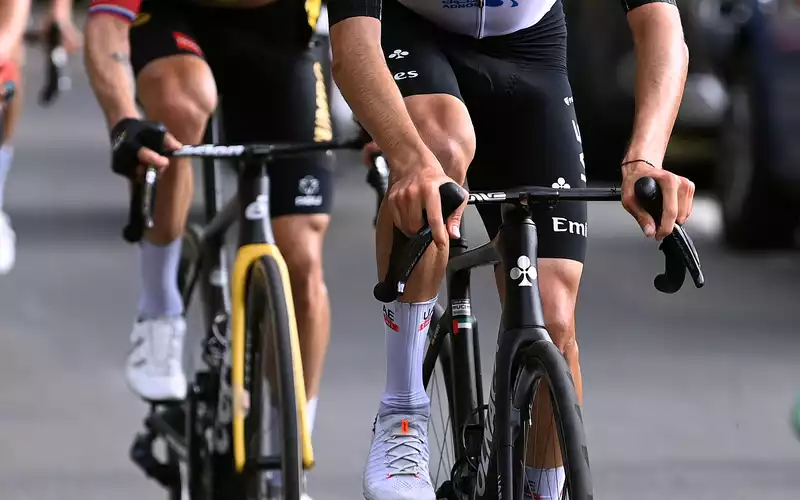Riders in the professional peloton voted against the use of extreme inward brake lever positions, realizing that the small possible aerodynamic benefit was not worth the risk of crashes and serious injury.
In late December, the UCI announced that it would limit so-called "extreme inversion" in 2024, with new regulations coming into effect in 2025 following consultations with component manufacturers.
In the Tour Down Under, UCI officials used a tool created with a 3D printer to allow riders to rotate the lever inward by up to 10 degrees.
In recent years, it has become fashionable to use thin bars and turn levers inward to improve aerodynamics. However, this has resulted in many young riders imitating the pros and crashing or nearly crashing, even though they do not have the same level of bike skills.
"The riders are really against extreme positions," CPA President Adam Hansen explained to RideMedia's Rob Arnold in a recent video interview at the Tour Down Under.
"We surveyed riders at the Giro d'Italia about brake lever positions. We gave them the options of straight, 5 degrees, 10 degrees, and extreme. Only 3 percent voted for the extreme position."
"The riders recognized the problem and commented on it. There were many crashes and near crashes.
Hansen, as CPA president, speaks frequently with the riders. He is also part of the new SafeR committee that is working to improve race safety at the Tour Down Under. He describes SafeR as "like anti-doping for race organizers," with key stakeholders in the sport studying why major crashes happen and what can be done to improve race safety.
Hansen is well aware of the dangers of extreme lever positions.
"I have an eye in the peloton for crashes that are about to happen, and that is really useful information.
"It's not the position of the lever that's the problem, it's when the rider applies the brakes. On the hood (where the lever is in an extreme position), you can't reach the brakes properly. You have to rotate your wrist, and by the time you do, it's too late."
Hansen is also a member of the UCI equipment committee representing riders and understands that "extreme inward leaning" levers can damage carbon handlebars and lead to potential crashes.
The consequences of the UCI rules, often seen in professional racing, can affect everyone who races or rides a bicycle.
"We have to draw the line and make it safe for everyone," Hansen noted.
"The UCI said that all 16-year-olds are turning their brake levers inward because that's what the pros do. We have to avoid that so we have to ensure the safety of everyone, not just the pros."
"I have worked with Michael Rogers, (head of road and innovation) at the UCI. He found that the handlebar levers were not designed to be positioned that way.
"To make matters worse, the crack was at the bottom of the metal wrap on the brake lever surrounding the handlebar. When you pedal or sprint uphill, you put a lot of stress on it and it unintentionally cracks. Then at the end of the race, when you sprint on the drop, you are holding the bar under the crack. That can lead to a fatal accident."
"The UCI did a study and found that the more you turn the lever inward, the greater the stress point. Handlebars are not designed for that. So the UCI took action."


Comments